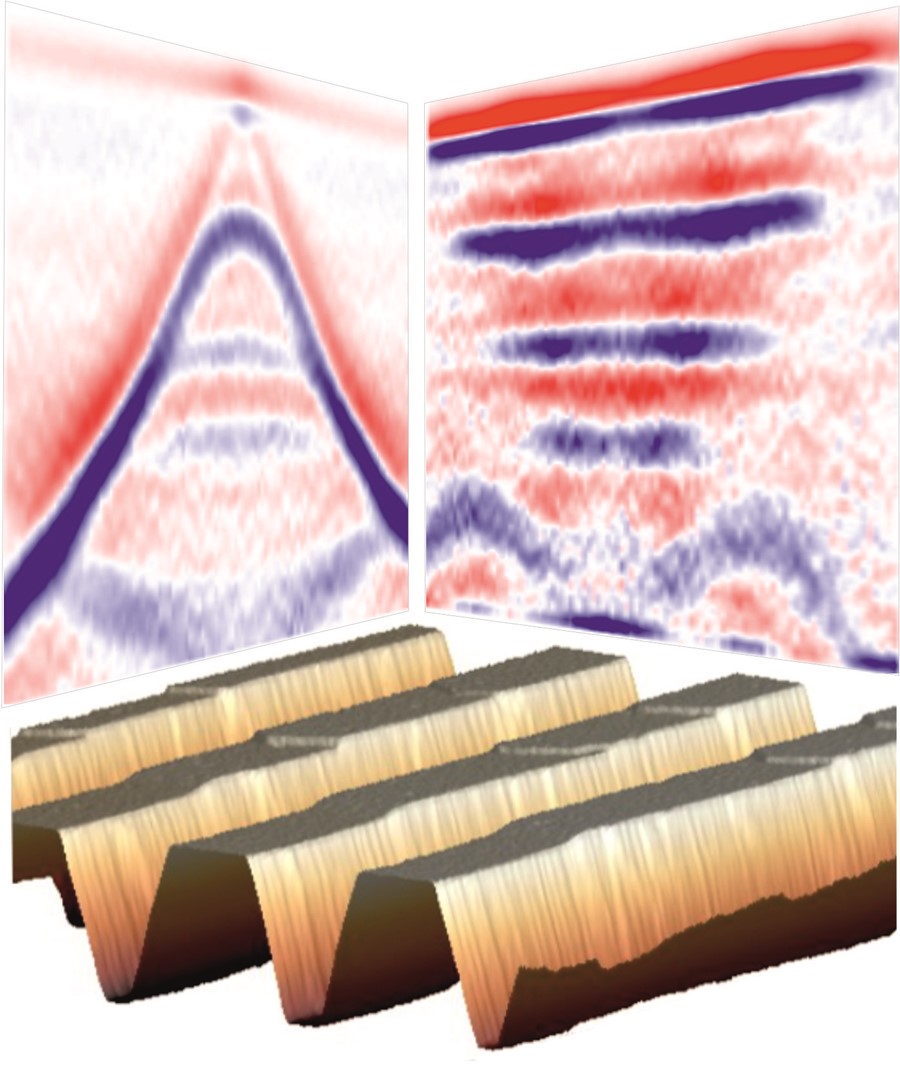TAILSPIN engineers switchable graphene nanoribbons
Researchers from FLAG-ERA’s TAILSPIN project ‘take a dip’ in the quantum world and push ahead with low-power transistors based on semiconducting graphene nanoribbons
Researchers within Graphene Flagship Partnering Project TAILSPIN have produced high-quality metallic and semiconducting graphene nanoribbons – narrow strips of single-layer graphene, which could become building blocks for future low-power nanoelectronics. This research, funded by FLAG-ERA, was a collaboration of the Max Planck Institute for Solid State Research in Germany, the Institut für Physik at the Technische Universität Chemnitz and MAX IV Laboratory in Sweden.
Graphene has unique electronic properties, but lacks a bandgap, meaning that transistors have to be specifically engineered to switch off. For example, semiconducting behaviour appears when graphene is cut into graphene nanoribbons. This was previously demonstrated mostly for nanoribbons on metallic surfaces, such as gold, which are impractical for technological applications. Now, the TAILSPIN team have obtained high quality, well-aligned and densely-packed nanoribbons on a semiconducting substrate made of silicon carbide (SiC). This provides opportunities to exploit the nanoribbons’ electronic properties and could allow for the realisation of new transistor design concepts, such as tunneling field effect transistors for next-generation electronics.
In this configuration, it appears as though an ultra-thin graphene carpet is rolling over microsteps made from SiC. Graphene nanoribbons develop on the risers (the vertical part of the steps), where graphene and SiC do not form covalent bonds. On the treads, instead, the two materials interact strongly to produce electronically inactive regions, which act as insulating barriers between the two neighbouring ribbons.
The researchers identified bandgaps in these graphene nanoribbons: nanoribbons of certain widths are metallic, or display a very small bandgap, while the others are semiconducting with energy gaps that decrease as the widths of the system increase. The average bandgap value of the samples was 0.75 eV, which could be defined as an ‘off state’ in digital electronics.
The researchers reported complete mapping of the electronic structure using angle-resolved photoelectron spectroscopy (ARPES). “Beyond the development of a semiconducting bandgap in these graphene nanoribbons and their technological implications, our study also shows the fascinating behaviour of the quantum world,” says Hrag Karakachian, researcher at the Max Planck Institute for Solid State Research and first author of this study.
The ARPES measurements reveal an ideal 1d electronic character realised in a graphene-based environment, consisting of well-resolved sub-bands, dispersing and non-dispersing along and across the ribbons respectively. This finding verifies earlier theoretical predictions and deepens our understanding of quantum confinement phenomena.
Karakachian uses an analogy to illustrate these quantum phenomena: “Imagine a huge parking lot with a bunch of cars in it. The cars can easily move in all directions and past each other. This is analogous to free electrons moving (dispersing) in both x and y directions in a graphene sheet. When the cars are forced into a narrow street on the other hand, their motion ceases to be free and becomes unidirectional. They are bound to move along the street but not across from it. The same principle applies to electrons in a graphene nanoribbon: the electrons disperse along the ribbons, but not across them. In quantum mechanics, this is a fascinating real-world ‘particle in a box’ type of behaviour.”
Yuri Svirko, Partnering Division leader, adds: “The gapless band structure considerably complicates the use of graphene in electronic and optoelectronic devices. In the framework of the TALSPIN partnering project, the team led by Christoph Tegenkamp and Ulrich Starke demonstrated the high-quality armchair graphene nanoribbons possessing the bandgap that depends on the ribbon width. This achievement opens avenues towards the fabrication of graphene-based transistors for future low-power electronics, while strengthening the role and added value of the Graphene Flagship’s partnering mechanism.”

Topography of graphene nanoribbons (GNRs). The GNRs are oriented along the mesa structures and ARPES spectra show the electronic band structure along and across the GNRs. Both spectra are composed of the same sets of sub-bands, which exhibit a graphene-like dispersion along the ribbons as opposed to their non-dispersive (flat) character across the ribbons. Credit: © Max Planck Institute for Solid State Research / Karakachian




